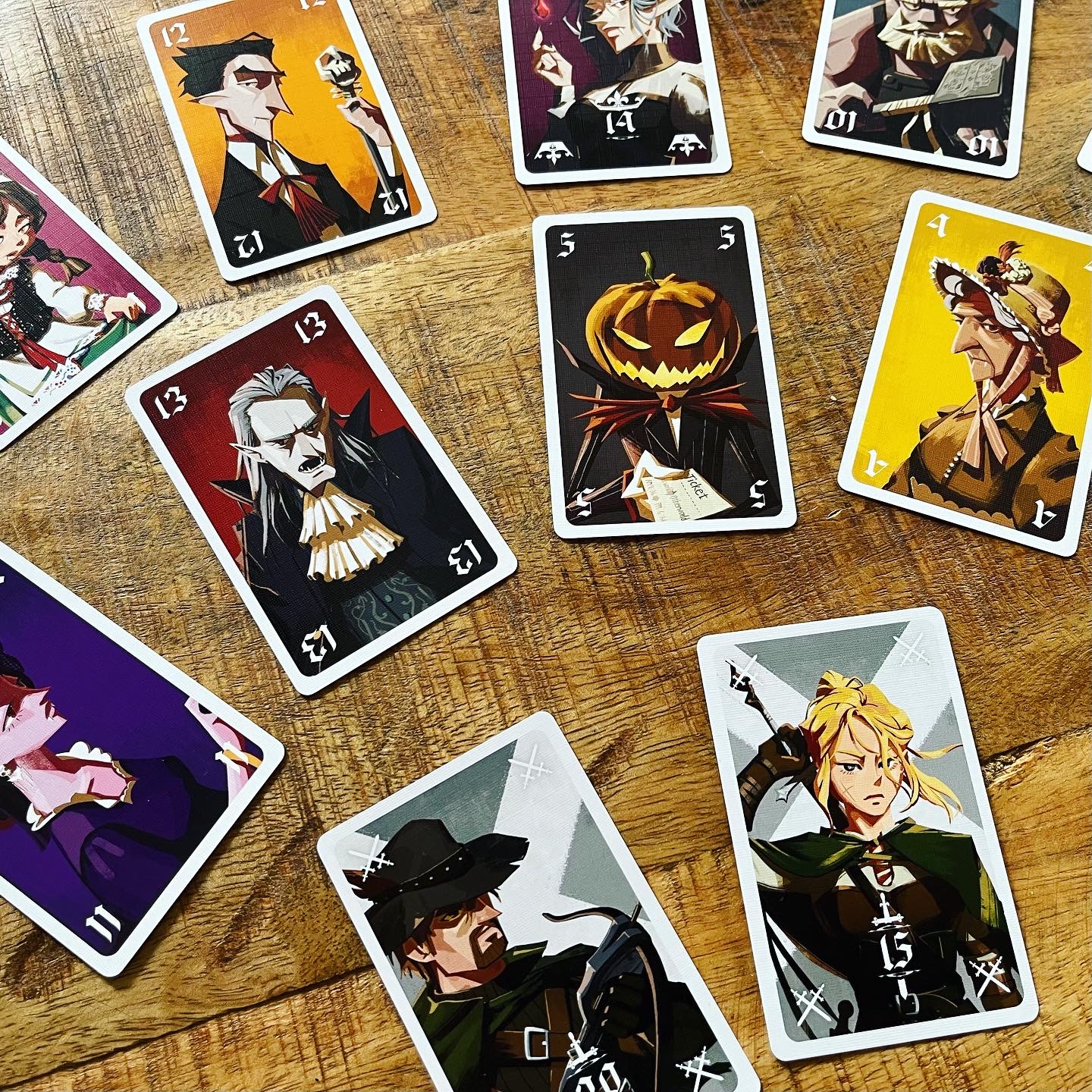In Vampire Queen, you try to climb the proverbial hierarchical ladder of vampire society. You try to protect all the vampires under your care from the coming daylight and those meddling vampire hunters. After all, once you’re stuck with a vampire hunter, it’s hard to get rid of them… To climb the ladder and claim the title of Vampire Queen (ladder becaimen?), you have to lick boots upwards and bite below you…

Vampire Queen is played with cards numbered 1-13, four variable vampire queens and two vampire hunters with a value of 0 during play and with values of 15 and 20 at the end of a night (round). Players start with a handful of cards. How many cards each player gets depends on the number of players. In the first round, the player who went to bed first the previous night gets the vampire hunter card of 15 points and the player to his left gets the vampire hunter with 20 points (depending on the number of players). The latter player is also the starting player of the first turn. How many rounds are played is jointly agreed in advance by the players. Players can therefore opt for a short game or a long bloody battle.
The starting player of a turn plays one or more vampire cards from his or her hand open or table or this player plays a vampire hunter card. If a player plays multiple vampire cards, all played cards must have the same value. Vampire queens can be used as a wild card for a value of your choice in a set with other vampire cards in addition to a value of 14. Subsequent players can play cards or they can pass. If a player chooses to play cards, that player must play as many cards as the starting player in a higher value than cards already played earlier in the round. Once all players have played and/or passed, the round is over. All played cards are discarded and the player who played the highest value starts the next turn.
The starting player of the turn can also come out/start with a vampire hunter. If a vampire hunter is played, this card counts for a value of zero. In a so-called vampire hunter turn, every other player must play exactly one vampire card of any value. Whoever plays the highest card must take all played cards back into their hand. This player starts the next turn after this, but this player may not start this turn with the same vampire hunter he had to take in hand in the previous turn.
If one or more players have emptied their hands at the end of a turn, the round ends immediately. At the end of the round, players score points for all the cards they still have in their hand. Numbered cards are worth their face value, queens are worth 14 and vampire hunters are worth 15 or 20. Players who still have a vampire hunter (or vampire hunters) on hand after the end of a round keep these cards. All cards are shuffled and players start a new round. The player who has scored the fewest points after all rounds wins.


The gameplay of Vampire Queen will probably feel familiar to fans of trick taking games and ‘ladder climbing games’ such as Velonimo, Tichu or the Great Dalmuti. In ladder climbing games, players each play one card, or a set of related cards. Then players must play cards of equal or higher value from the same set. The last player to play a card or highest card starts a new ‘climbing round’. This classic game mechanism has been used many times, but the distinguishing element – at least for us – in Vampire Queen are the vampire hunters. These cards allow you to force minus points on other players. However, you still need to plan well. Passing at the right moments and saving cards is the key to victory. If you don’t yet have a ladder game in your collection or are a fan of such games, then Vampire Queen is sure to please.



